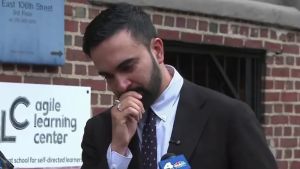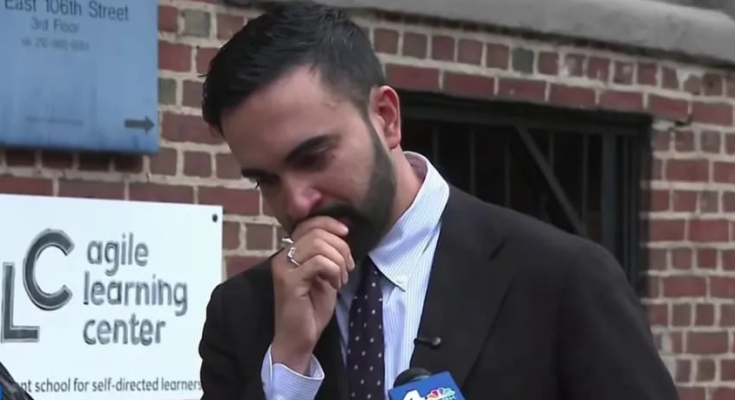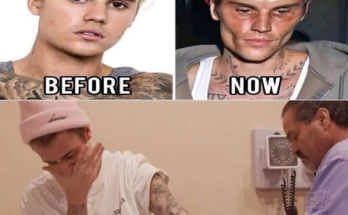Thirty minutes ago in New York, history was made when Zohran Mamdani was officially confirmed as the Democratic Party’s nominee for mayor of New York City. The announcement came after the city’s Board of Elections completed the ranked-choice vote tally, which showed Mamdani winning by a comfortable margin against former governor Andrew Cuomo. For many, this was more than just a primary result—it was a signal of a political shift within America’s largest city.
Zohran Mamdani is not a typical political figure. Born in Kampala, Uganda, in 1991, he immigrated to the United States as a child and became a naturalized citizen in 2018. His background is both international and deeply rooted in New York. Since 2021, he has represented District 36 in the New York State Assembly, which covers Astoria, Queens. A member of both the Democratic Party and the Democratic Socialists of America, Mamdani built his reputation as a grassroots organizer before stepping into elected office. His career has been marked by bold ideas, a willingness to confront entrenched power, and an unwavering commitment to working-class New Yorkers.
His platform during the mayoral race read like a progressive wish list. He has called for free city buses, public childcare programs, city-owned grocery stores to combat food deserts, a rent freeze for rent-stabilized apartments, major investments in affordable housing, and higher taxes on the wealthy and corporations. Supporters say his vision reflects the urgent needs of ordinary New Yorkers, while critics argue that many of his ideas are unrealistic, expensive, or ideologically extreme. Either way, Mamdani has managed to capture the imagination of voters who are hungry for change.
The Democratic primary was always going to be high-profile, with Andrew Cuomo attempting a comeback after his resignation as governor in 2021. Cuomo entered the race with name recognition, establishment backing, and significant fundraising power. For months, political analysts predicted that his experience and stature would help him secure the nomination. Yet Mamdani’s campaign strategy—focused on grassroots mobilization, neighborhood meetings, and a clear progressive message—proved more effective in the ranked-choice system. Round after round of vote redistribution pushed him closer to the 50 percent threshold until, in the final count, he surged ahead with 56 percent of the vote to Cuomo’s 44 percent.
The confirmation of Mamdani’s victory has sent ripples across the political landscape. Nationally, progressives are hailing it as a breakthrough moment, comparable to Alexandria Ocasio-Cortez’s upset win in 2018. It demonstrates the growing strength of younger, left-leaning voices within the Democratic Party. Locally, however, the implications are more complex. New York City is facing crises in housing affordability, public safety, public transportation, and climate resilience. Voters will want to know whether Mamdani’s policies can deliver solutions or whether they will remain ambitious promises.
Reactions have been sharp. President Donald Trump, who has kept a watchful eye on New York politics, criticized Mamdani directly, calling him a “communist” and warning that his election would turn the city into what he described as a failed socialist experiment. More moderate Democrats have also expressed concern, worried that his candidacy could alienate centrist voters or complicate the party’s ability to govern effectively. At the same time, young voters, activists, and working-class communities are energized by the idea that someone who speaks their language and understands their struggles might soon run the city.
The road to the mayor’s office, however, is not yet clear. Mamdani must now compete in the general election scheduled for November. He will face multiple opponents, including incumbent mayor Eric Adams, who is running as an independent, Republican nominee Curtis Sliwa, and potentially Andrew Cuomo if he decides to continue as an independent candidate. New York’s political map is overwhelmingly Democratic, but three-way and four-way races can produce unpredictable outcomes. Mamdani will need to expand his coalition beyond his progressive base if he hopes to win city-wide.
Key challenges await him. First, he must convince skeptics that his proposals are financially viable. Free buses and city-run grocery stores are attractive on paper, but they require substantial funding. Opponents will press him on where the money will come from and whether higher taxes could drive businesses and residents away. Second, public safety remains a central issue. While crime rates are lower than in previous decades, the perception of safety is fragile, and many New Yorkers want concrete action rather than ideological debates. Finally, Mamdani will need to navigate the city’s powerful institutions—real estate developers, business interests, and political machines—that often resist sweeping reforms.
Despite these obstacles, Mamdani’s victory represents a turning point in the city’s political conversation. For decades, New York mayors have balanced progressive rhetoric with pragmatic governance. Mamdani appears intent on pushing the balance further left, arguing that pragmatism has too often meant compromise at the expense of working people. His nomination ensures that issues like housing rights, transit accessibility, and economic inequality will dominate the general election debates.
For his supporters, today’s confirmation is the culmination of a dream: a grassroots leader who speaks directly to their struggles, who challenges corporate power, and who dares to imagine a city that works for everyone. For his critics, it is a warning sign of turbulence ahead, raising questions about whether New York is ready to embrace such sweeping change. For Mamdani himself, it is both a victory and the beginning of an even harder fight—a test of whether his vision can withstand the scrutiny and challenges of a city as complex as New York.
As of this moment, thirty minutes after the official confirmation, Zohran Mamdani is no longer just a rising progressive star. He is the Democratic Party’s chosen candidate for mayor of New York City. The coming months will determine whether he can translate momentum into victory, and whether his bold vision for New York will reshape the city’s future. What is certain is that this moment will be remembered as a milestone in the evolving story of American urban politics, where the voices of younger, more diverse, and more radical communities are no longer on the margins but at the center of power.


